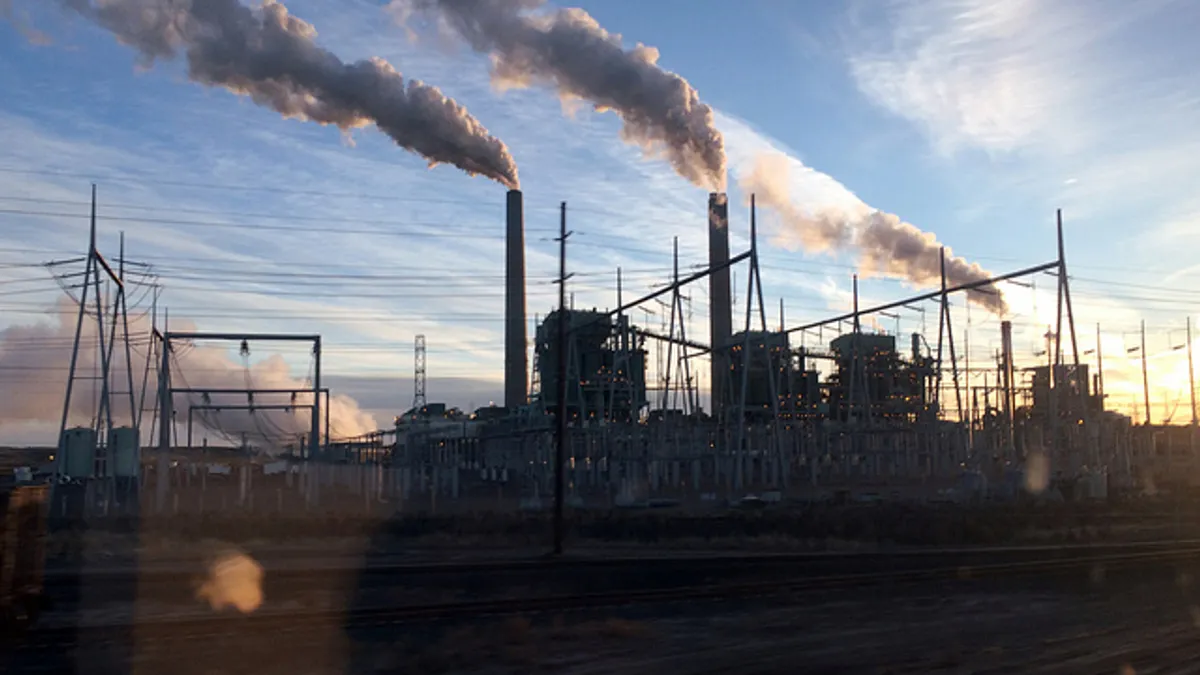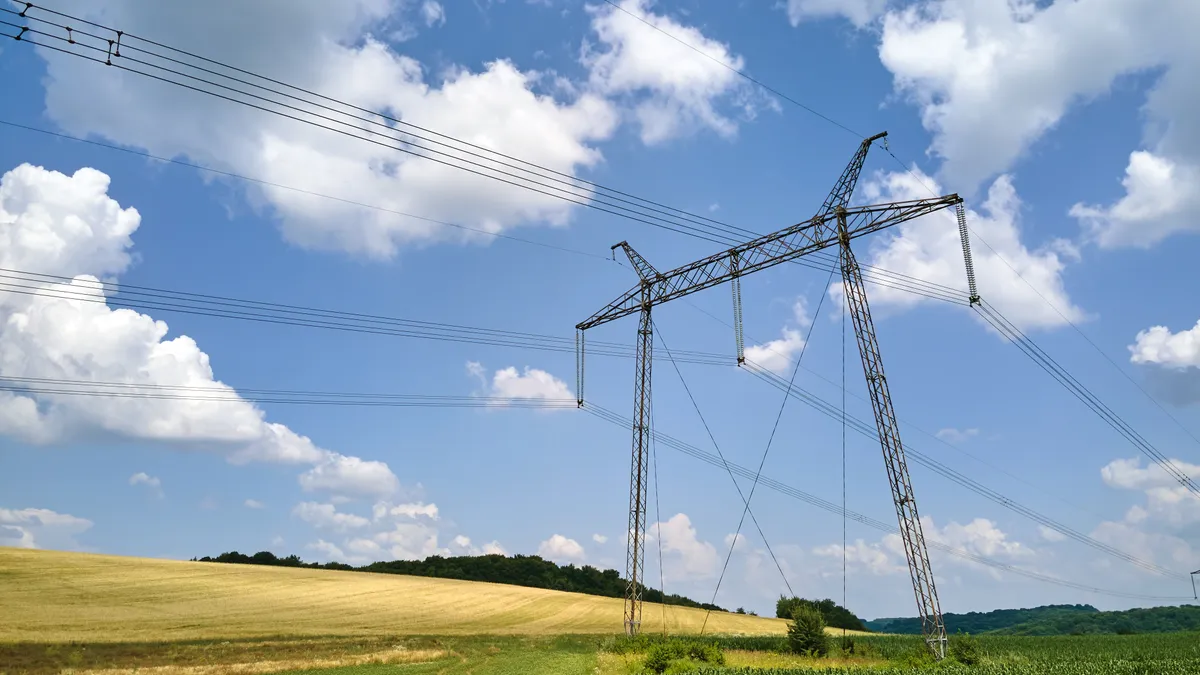Dive Brief:
- A new report out from a coalition of utilities working alongside the Natural Resources Defense Council finds that the top 10 power producers account for over a third of the industry's emissions, but plants are becoming cleaner and, amid a wave of coal retirements, emissions are declining.
- The top 100 power producers, the report finds, accounted for 87% of plant emissions, the report finds, but levels of SO2 and NOx emissions have been “dramatically reduced,” though CO2 levels have actually increased relative to 1990 levels.
- In 2013, the year examined by the report, the largest power producers emitted approximately 2.9 million tons of SO2, 1.46 million tons of NOx, 20.7 tons of mercury, and 1.95 billion tons of CO2.
Dive Insight:
A new report from NRDC and several utilities, authored by M.J. Bradley & Associates, finds “air pollution emissions from power plants are highly concentrated among a small number of producers.” The top producers accounted for 85% of the nation's generation in 2013, but also almost 90% of emissions. The top 10 generators accounted for over a third.
But generation is getting cleaner, and even an apparent rise in carbon emissions has to be balanced against recent progress. In 2013, power plant SO2 and Nox emissions were 80% and 74% lower, respectively, than they were 25 years ago. And while CO2 emissions were 14% higher than they were in 1990,m the report aqlso notes that from 2008 through 2013 emissions decreased by 12%.
Mercury emissions from power plants have decreased 50% since 2000, the first year the were reported.
“Collectively, power plants are responsible for a declining share of U.S. air pollution emissions,” the report concludes. “In 2013, power plants were responsible for about 63 percent of SO2 emissions, 13 percent of NOx emissions, 38 percent of mercury emissions, and 61 percent of CO2 emissions.”
The detailed report looks at a variety of statistics, and the details are fascinating: While Duke Energy had the most CO2 emissions, American Electric Power led SO2 and NOx emissions. Duke was also the second largest source of NOx emissions, but the report finds the utility “has seen significant improvement in its SO2 and NOx emission rates since 2000.”
Not so on carbon, however. The report points out that after merging with Cinergy in 2006, Duke
expanded its coal-fired generating fleet which led to a dramatic increase in CO2 and SO2 emissions. But the company’s SO2 emissions did drop significantly after the merger after Duke retrofitted 10 plants.
Duke's generation more than doubled between 2000 and 2013, which led to carbon emissions almost trippling. But that is largely on the basis of sheer volume – Duke led the nation in energy produced in 2013. “Despite significantly higher CO2 emissions, Duke’s CO2 emission rate has only risen 10% thanks in part to an increase in low and non-emitting generation,” the report found.
Southern Co. was able to reduce both total emissions and rates for SO2, NOx, and CO2 between 2000 and 2013 as it cut coal generation and added gas-fired generation, the report said. NextEra’s SO2 and NOx emissions and rates “dropped substantially between 2000 and 2013,” on the back of a reduction in oil-fired generation.
Duke, Exelon, Southern Co., NextEra Energy and AEP were the five largest generators in 2013.















